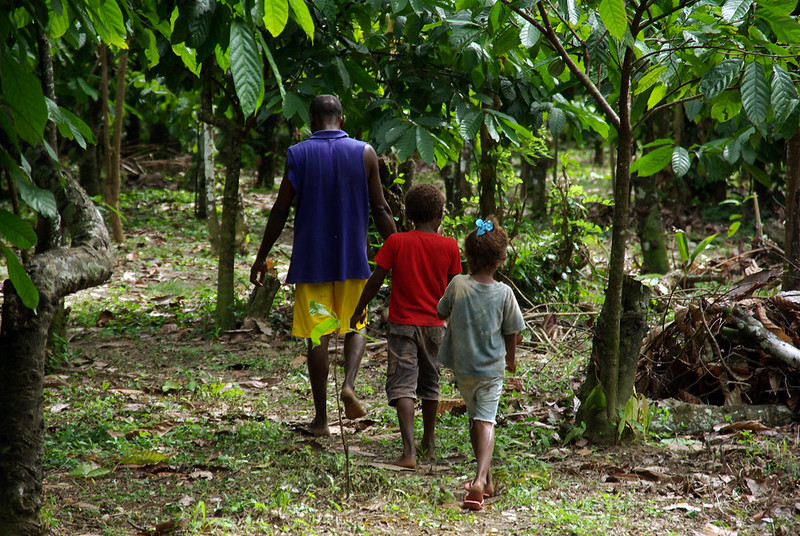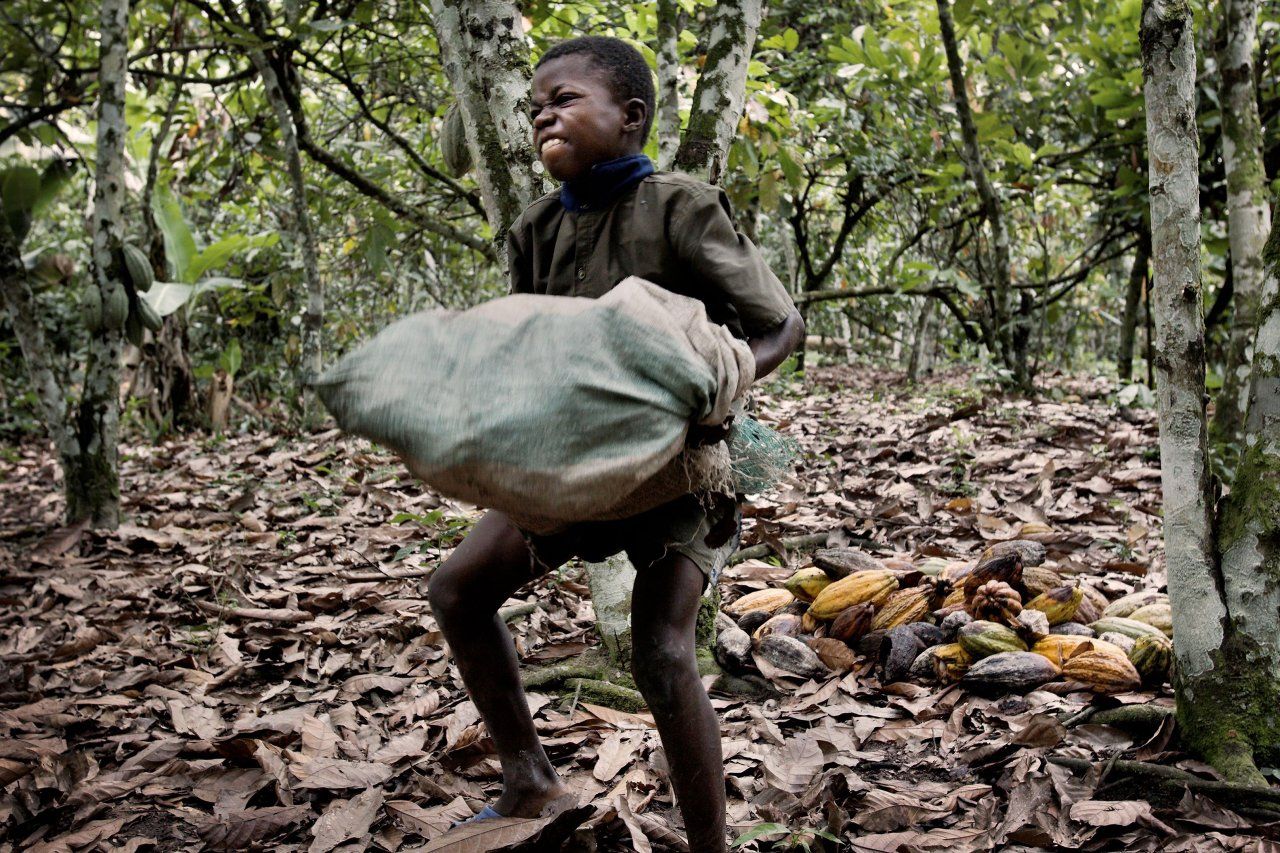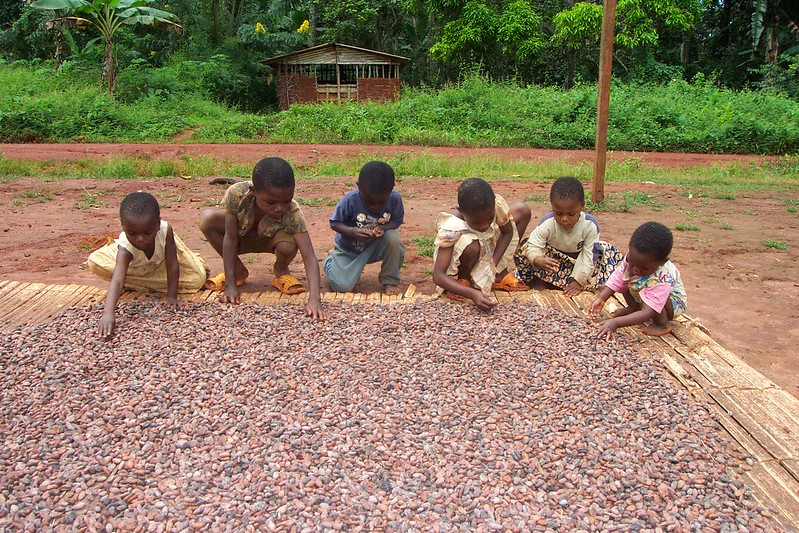Enslaved Chocolate
Posted by muntu on Jun 26th 2020

It is 5A.M. In a small hut in the middle of the forest are kids of 11, 12, 15 years old getting ready for another day of tremendous work so we can enjoy our chocolate.
What a guilty pleasure!
The problem? This is the life of thousands of enslaved children in West Africa, working in the cocoa farms for decades and, the chocolate industry is the fuel for such misery. West Africa is responsible for 60% of world cocoa production.

The sweet indulgence industry collects more than $103 billion in sales annually and, the ones making it possible are paid (when they get paid) about 85 cents a day. The whole supply chain of the chocolate industry is entrenched in poverty, exploitation, and suffering.
The US department of labor found that more than 2 million children were been forced to work in cocoa farms in inhuman conditions.
Below, is a small fraction of a disturbing report of the Washington Post about the cruel lives of some of these children.
How old are you?” a Washington Post reporter asks one of the older-looking boys.
“Nineteen,” Abou Traore says in a hushed voice. Under Ivory Coast’s labor laws, that would make him legal. But as he talks, he casts nervous glances at the farmer who is overseeing his work from several steps away. When the farmer is distracted, Abou crouches and with his finger, writes a different answer in the gray sand: 15.
Then, to make sure he is understood, he also flashes 15 with his hands. He says, eventually, that he’s been working the cocoa farms in Ivory Coast since he was 10.

Photo source: thedailybeast
In 2000 a British documentary exposed the chocolate atrocities and child trafficking that led to public outrage and calls to boycott the chocolate industry.
Stories of enslaved children, who have traveled more than 200 miles to work as cocoa slaves, surfaced everywhere on the news, and their scars from machete injuries, their expression of emptiness, and their mutilated bodies from hunger were just too much to bear.
Consequently, in 2001, shame and pressure from the US Congress led to the signing of a pledge where the big players of the chocolate industry committed to eradicating the worst form of child labor. They convinced the international community to fix the problem by 2005 and promised to protect their rights and their lives but, 20 years later, the deadlines to solve the problem still yet to be met. The chocolate industry missed 2005, 2008, and 2010 deadlines and until today, the entire world still eating chocolate that is a product of the sweat and bleeding of a defenseless child.
Through the deal, the consumers were supposed to see certification in the form of a label as a symbol and assurance that the chocolate bar did not come from an exploited child.

Little has been done to eradicate the plague. The resources haven't been allocated and so, the worst form of modern slavery keeps flowing.
In Cote d'Ivoire and Ghana, the two countries that account for 60% of the cocoa produced in the whole world, villages are left with nothing but the chocolate scent. That means, no schools, no electricity, no running water, only grim poverty.
The sponsored projects and the sustainable policies these companies are passing to the media and their webpages have little to no impact on the lives of these communities. It can never replace the years these children were deprived to see their families, can never heal their mutilated bodies.
Furthermore, deforestation is another hefty price we will pay. The chocolate industry is responsible for the environmental problem of catastrophic proportions. Cote D'Ivoire alone has lost 80% of its forests due to pressure from the chocolate companies.
 Photo source: International Institute of Tropical Agriculture
Photo source: International Institute of Tropical Agriculture
Now the big question.
Far too many children are held in the worst forms of labor exploitation, but how many more do we need to see to start demanding real changes?
How many more ecological disasters we need to assist to be part of the change?
We wanted to tell you that the certification programs such as Fairtrade, UTZ, and Rainforest Alliance are the solution but quickly found out that’s not the case. They are an illusion of what the solution could be. Unfortunately, these organizations lack rigorous enforcement of child labor rules. Nevertheless, when faced with the decision always look/ choose for Fairtrade, Rainforest Alliance, or UTZ certification, that’s the least we can do.
During the Washington Post report, Antonie Fountain, managing director of the Voice Network, an umbrella group seeking to end child labor in the cocoa industry said :
We haven’t eradicated child labor because no one has been forced to,” Fountain added. “What has been the consequence . . . for not meeting the goals? How many fines did they face? How many prison sentences? None. There has been zero consequence.”
The cruel reality is that the chocolate industry keeps the profits far from the people who need it most!

Photo source; The Daily Mail
Simply put, child labor will endure as long as the chocolate industry continues to pay the cocoa farmers less than a dollar a day and, we continue to blindly fuel this behavior by buying chocolate from these well known brands.
We are part of the problem and part of the solution. We can make the change and #becomeaconsciousconsumer.
In our next blog, we will tell you about the brands that are changing the narratives, so you can support, make your voice heard and boycott the companies that continue to scramble to produce slave free chocolate and eliminate deforestation from their supply chain.

